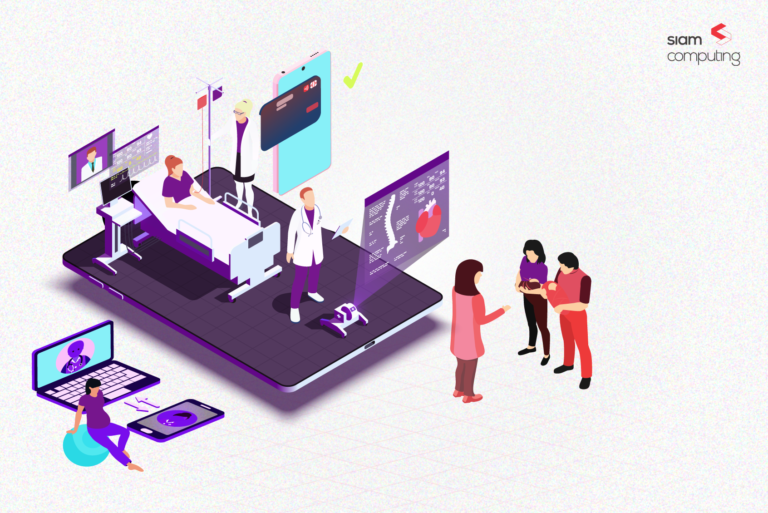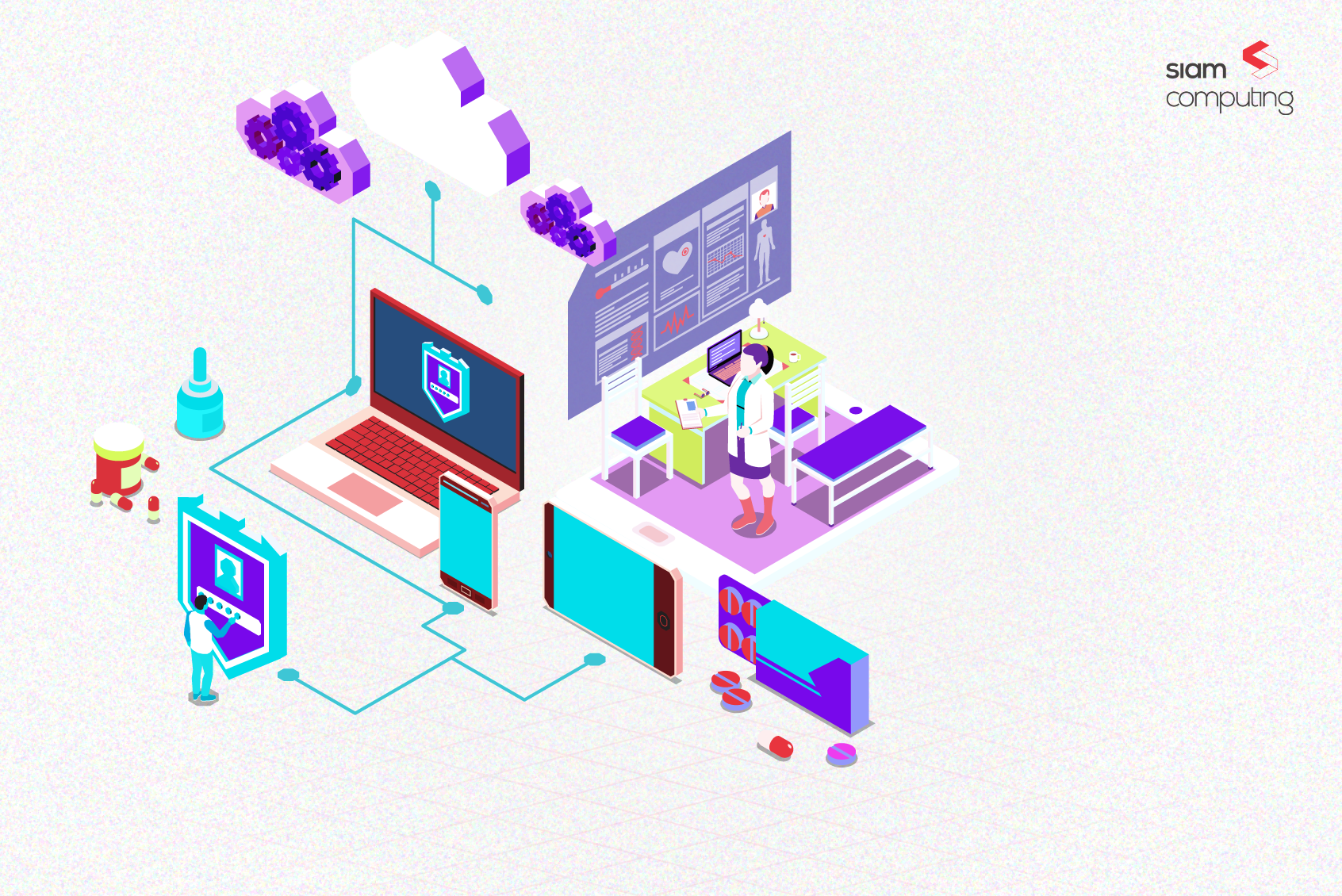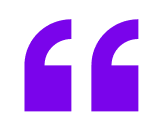To create a robust project, having a focused balance between development lifecycle and completion of the project is necessary. Following a development cycle process ensures efficient project management, high quality output and alignment with the business objectives. In this context, System design is the most critical step as it lays the foundation for the actual implementation of the targeted output.
“Great design is not just a solution, it is the elimination of the problem” – M.Cobanli.
A well-designed system is maintainable, scalable and adaptive to the changing requirements, making it the key factor in the success of the project. In this article, we are going to look at the What? Why? and How? of system design.
System Design in The Development Cycle
In simple words, system design is the starting point of a technical process that includes defining the architecture, components, modules, interfaces, and data for a system to satisfy specified requirements.
Including System design in the development cycle provides the following benefits:
Concrete Plan For The System
System design bridges the gap between high-level requirements and actual implementation. It takes the abstract ideas and concepts gathered during the requirements analysis phase and transforms them into a concrete plan for building the system.
Blueprint for Development
It provides a detailed blueprint or roadmap for the development team to follow. Without a well-defined system design, development can become chaotic, leading to misunderstandings, errors, and delays.
Quality Assurance
System design allows for early identification and resolution of potential issues or conflicts in the system’s architecture, components, and interfaces. This proactive approach helps ensure better quality in the final product.
Modularity and Reusability
By breaking the system into smaller, modular components, system design promotes modularity and reusability. This means that individual components can be developed, tested, and maintained separately, making it easier to update or replace parts of the system without affecting the whole.
Future Adaptation
Proper system design takes into account scalability requirements, allowing the system to grow and adapt to changing needs over time. This is particularly important in today’s fast-paced technology landscape.
Cost Management
Effective system design can help control development costs by identifying optimal solutions and preventing expensive rework on late-stage changes. It also aids in resource allocation and estimation.
Focal point of communication
System design documents serve as a common reference point for all team members, stakeholders, and anyone involved in the project. It facilitates clear communication by providing a shared understanding of the system’s architecture and functionality.
Maintenance and support
A well-documented system design eases the burden of maintenance and support after the system is deployed. It helps new developers understand the system’s structure and logic, making it easier to troubleshoot issues and make updates.
Having understood the importance of system design, it is important to understand the different phases of system design, mentioned briefly here-
- High Level Design (HLD): This is an initial design phase that focuses on creating a high-level abstraction of the entire system. It outlines the system’s architecture, major components, modules, and their interactions. The primary goal is to define the system’s overall structure and key functionalities.
- Low Level Design (LLD): This follows and is similar to HLD but focuses on setting up the same process on finer details of each component/module identified in the high-level design. It provides a detailed plan for implementing each module, including algorithms, data structures, and interfaces.
We will now look at the complete process for creating a systems design to craft effective solutions.
Systematic Process for Creating A Systems Design
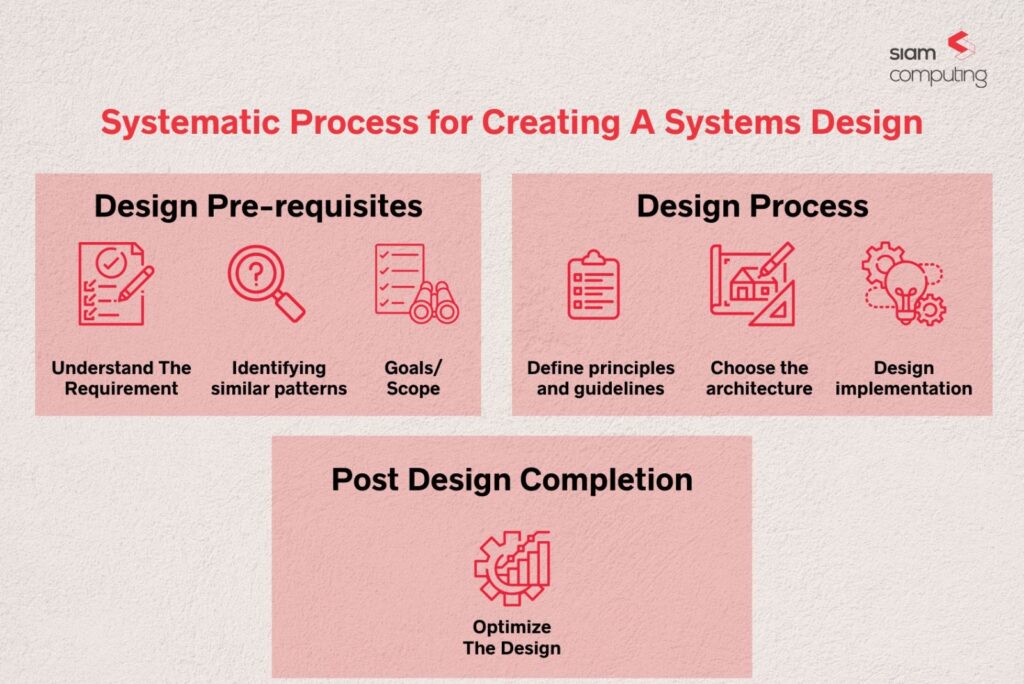
Following are the steps you can follow to create a systems design for your solution-
1. Understand The Requirement
Begin by thoroughly understanding the requirements provided by the stakeholders/clients. This includes functionality, user needs, and any technical constraints. Make notes and give a complete form for the requirement like a story that details necessary events thoroughly.
2. Define The Scope
Defining the scope and overall goals is an important step for creating a focussed systems design. The interesting part here is that you fully understand the problem at hand and put down ways of solving that problem. It is best to discuss with relevant stakeholders and take their inputs to ensure a full-proof solution incorporating all perspectives.
3. Narrow Down on Similar Patterns
Once you have a rough idea of what you want to achieve with systems design, try and narrow down on similar solution patterns corresponding to your problem. The key to doing this is conducting market research to compare your needs and adapt solutions that fit well. This will need you to closely understand the pain points, needs, behaviors, and preferences of your users as they use your product to create an intuitive and user-centric systems design.
4. Define Principles and Guidelines
Once you have defined your goals and conducted user research, the next step is to define your design principles and guidelines. These are the foundational elements that will guide the design of your product and ensure consistency and coherence across platforms. To be clear, define some common guidelines for the project that need to be followed throughout the design process. This will prevent you from taking each sip of water from different cups everytime.
5. Select an Architecture
Select an appropriate architecture that suits the requirements. Choosing an architecture will play a key role in the outcome of the project. The architecture should be chosen carefully considering the effective solution for the problem, future enhancements, sustainability or reliability and budget constraints of the project. Some of the architectures are highlighted below:
Monolithic Architecture : Entire application developed as a single, tightly integrated unit, like traditional content management systems (CMS)
Microservices Architecture: Here, the application is broken into small, independent services, as in the case of e-commerce platforms with microservices for specific functionalities.
You can customize or combine the structures as per your need to provide a suitable solution to the problem.
6. Implement The Design (HLD/LLD)
Develop a high-level/low-level design that outlines the app’s major components and their interactions. This includes user interfaces, data flow, and architectural considerations-
Step 1: Design Data Models
Define the data structures required for the app, such as databases and data storage. Consider data normalization and storage efficiency.
Step 2: Algorithms and Logical Design patterns
Develop algorithms and logic to implement the app’s functionality. Ensure efficiency and scalability in your design.
Step 3: APP Interfaces
Specify interfaces between app components, including APIs, data formats, and communication protocols.
7. Optimize The Design
Evaluation and iteration are essential steps to optimize your system design for usability and functionality. You should evaluate your design using various methods and criteria, such as comparing live designs, expert review and micro-managing each module to ensure that the best approach has been applied throughout. You should collect and analyze feedback and data from the evaluation methods, and identify the strengths and weaknesses of your design. You can then use the evaluation results to improve and refine your design, and repeat the evaluation and iteration cycle until you achieve your desired outcomes.
Key Considerations in Systems Design
The following aspects can help you see optimum results with systems design
Technical Aspects While Making The Systems Design
Scalability and Adaptability: Plan for scalability and performance optimization, utilizing techniques like caching, load balancing, and optimizing critical code paths.
Security Measures: Incorporate security measures such as authentication, authorization, encryption, and access controls, addressing potential vulnerabilities.
Error Handling and Fault Tolerance: Design effective error handling and fault tolerance mechanisms for system reliability.
Monitoring and Analytics: Implement monitoring tools and analytics for tracking app performance and user behavior.
To be Monitored After Design Completion
Testing Strategy: Define a comprehensive testing strategy, covering unit testing, integration testing, and usability testing. Develop test cases and scenarios based on requirements.
Documentation: Create detailed documentation, including design specifications, interface descriptions, and user guides, and keep it updated.
Deployment Plans: Strategically plan the app’s deployment, including app store submissions when relevant. Consider versioning and update strategies.
Version Control: Establish processes for managing changes and version control, employing systems like Git for efficient change tracking.
Post-Completion Iterative Steps
Backup and Recovery Plans: Develop plans for data backup and recovery, ensuring data security and business continuity.
Performance Evaluation: Periodically assess the app’s performance against predefined metrics and user expectations.
Feedback and Iteration: Gather feedback from users and stakeholders, iterating on the design to enhance it further.
Continuous Optimization: Continuously cross check and optimize the design at each module is concluded and associated with the design.
The following aspects can help you see optimum results with systems design
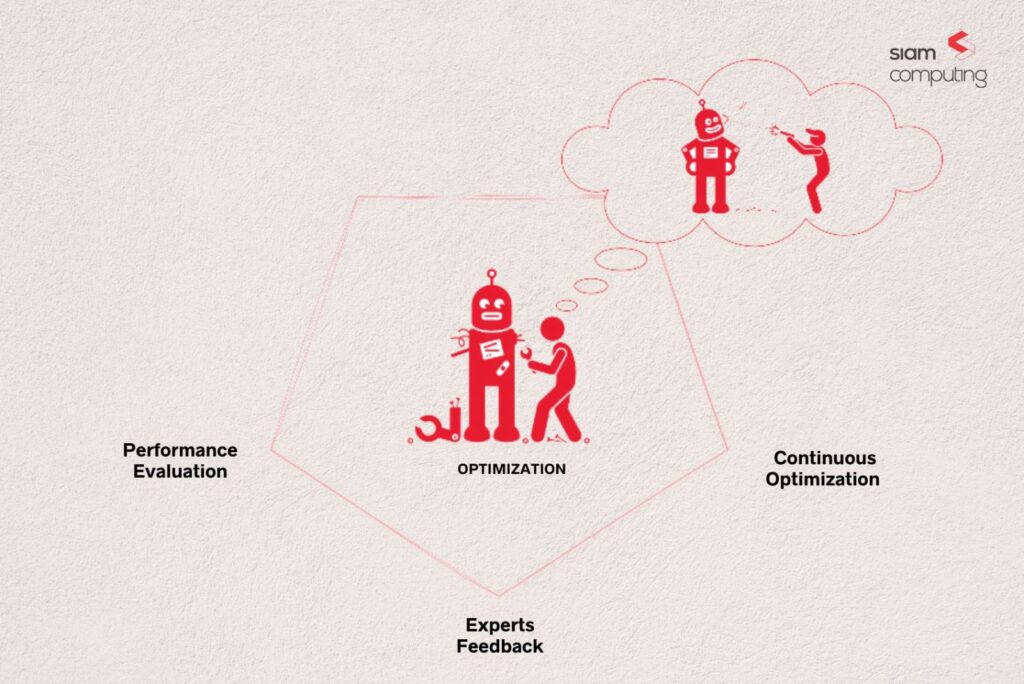
By following the above checklist, you can create an effective system design for your project. A well-designed system is not only a solution to the problem, it also provides a solid grip on the overall aspects of the project. It lays the foundation for a successful project and its ongoing maintenance and support.
About the author

Manojkumar Chinnadurai is a Senior Web Engineer at Siam Computing with over four years of experience as a backend developer. He specializes in architecture design and development and leads projects guided by his passion for crafting user-first applications, first-hand insights from which he shares in his journey as a mentor.



